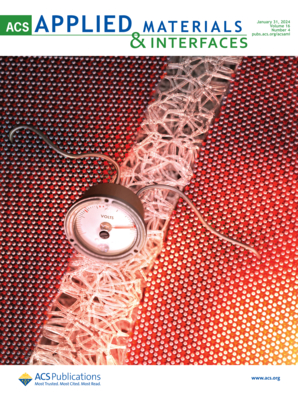Liquid Bi–Sb–Sn Electrodes with Synergistic Stabilization Mechanism for Long-Lifespan Sodium-Based Liquid Metal Batteries
IF 8.3
2区 材料科学
Q1 MATERIALS SCIENCE, MULTIDISCIPLINARY
引用次数: 0
Abstract
Sodium-based liquid metal batteries are well suited for stationary energy storage due to their long life, intrinsic safety, and ease of scale-up. However, the irreversible alloying reaction between the positive current collector (PCC) and the cathodes at high temperatures leads to severe capacity degradation of the battery, severely limiting its scale-up application. In this work, a Bi–Sb–Sn alloy cathode based on a synergistic stabilization mechanism was designed for the first time. Due to the density difference of Bi, Sb, and Sn and the compatibility difference of Bi and Sn with the PCC, a part of Bi and Sn is spontaneously distributed in the region close to the PCC. The protection of Sb is realized by blocking the contact of Sb with the PCC as well as removing the PCC material dissolved in the cathode to prevent the loss of active material. Based on such protection, the Na||Bi36Sb24Sn40 cell maintained 99% Coulombic efficiency for 450 cycles at a rate of 0.75 C, with a capacity retention of 99.56% and a capacity decay rate of 0.001% per cycle. In addition, the interaction of Bi, Sb, and Sn during discharge also promotes capacity release and energy efficiency. At 0.3 C, the Na||Bi36Sb24Sn40 cell achieved 89% capacity utilization and 82% energy efficiency. These results provide an idea for the design of other batteries based on liquid metal electrodes.

用于长寿命钠基液态金属电池的具有协同稳定机制的液态铋锑电极
钠基液态金属电池具有寿命长、内在安全和易于放大等优点,非常适合用于固定式储能。然而,正极集流体(PCC)与阴极之间在高温下发生的不可逆合金化反应会导致电池容量严重下降,严重限制了其规模化应用。在这项工作中,我们首次设计了一种基于协同稳定机制的铋锑锰合金正极。由于 Bi、Sb 和 Sn 的密度差异以及 Bi 和 Sn 与 PCC 的相容性差异,一部分 Bi 和 Sn 自发地分布在靠近 PCC 的区域。对锑的保护是通过阻断锑与 PCC 的接触以及清除溶解在阴极中的 PCC 材料来实现的,以防止活性材料的损失。基于这种保护,Na||Bi36Sb24Sn40 电池在 0.75 C 的温度下循环 450 次,库仑效率保持在 99%,容量保持率为 99.56%,容量衰减率为每循环 0.001%。此外,放电过程中 Bi、Sb 和 Sn 的相互作用也促进了容量释放和能量效率。在 0.3 C 下,Na|||Bi36Sb24Sn40 电池的容量利用率达到 89%,能效达到 82%。这些结果为设计基于液态金属电极的其他电池提供了思路。
本文章由计算机程序翻译,如有差异,请以英文原文为准。
求助全文
约1分钟内获得全文
求助全文
来源期刊

ACS Applied Materials & Interfaces
工程技术-材料科学:综合
CiteScore
16.00
自引率
6.30%
发文量
4978
审稿时长
1.8 months
期刊介绍:
ACS Applied Materials & Interfaces is a leading interdisciplinary journal that brings together chemists, engineers, physicists, and biologists to explore the development and utilization of newly-discovered materials and interfacial processes for specific applications. Our journal has experienced remarkable growth since its establishment in 2009, both in terms of the number of articles published and the impact of the research showcased. We are proud to foster a truly global community, with the majority of published articles originating from outside the United States, reflecting the rapid growth of applied research worldwide.
 求助内容:
求助内容: 应助结果提醒方式:
应助结果提醒方式:


